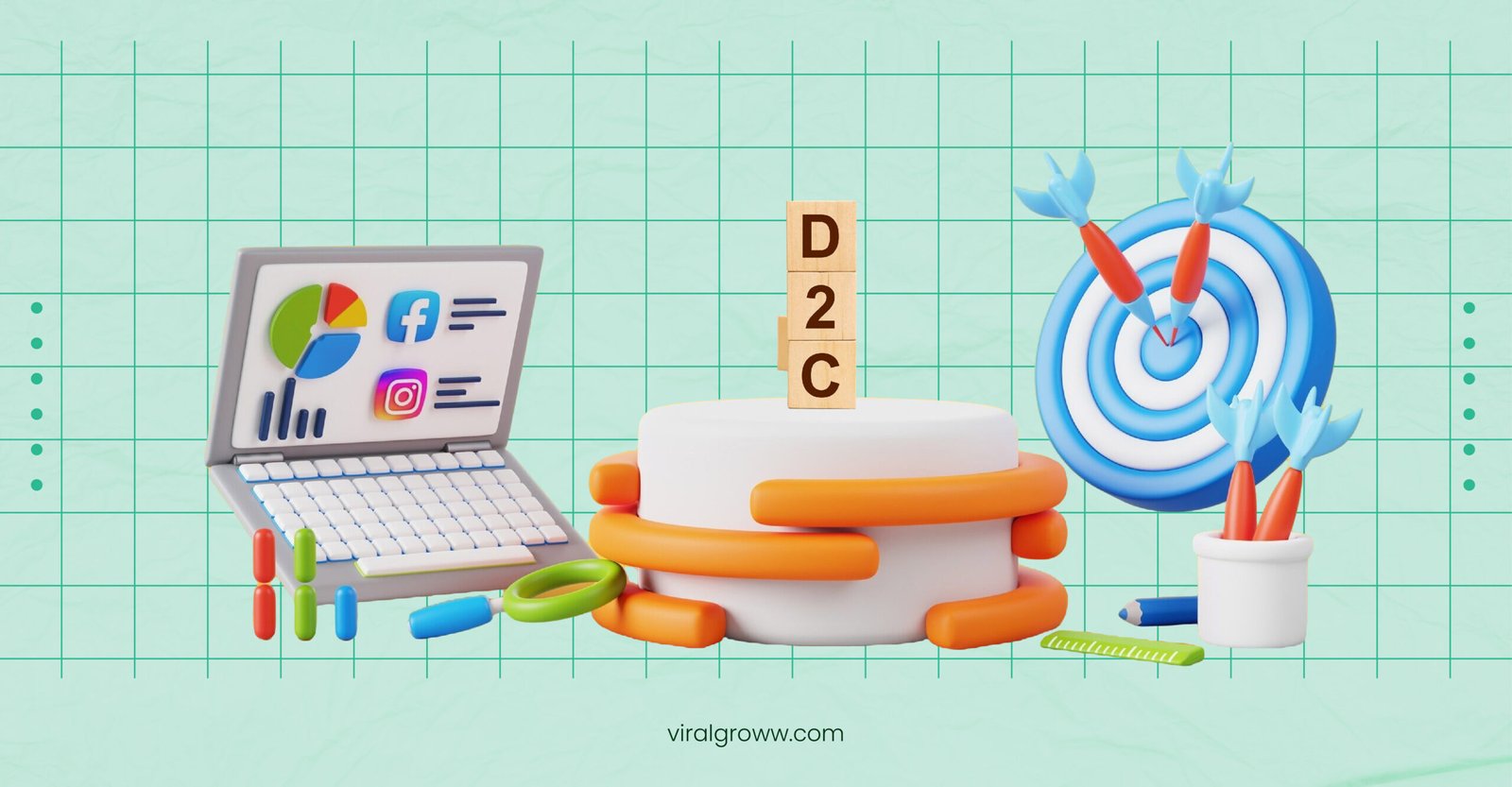Table of Contents
Are you ready to skyrocket your D2C brand’s performance in 2025? 🚀 As the digital landscape evolves at breakneck speed, staying ahead of the curve is no longer optional—it’s essential for survival. Performance marketing has become the lifeblood of successful Direct-to-Consumer brands, but the strategies that worked yesterday might not cut it tomorrow.
In this rapidly changing environment, D2C brands face a daunting challenge: how to navigate the complex world of performance marketing while staying agile and innovative. The good news? With the right approach, you can turn these challenges into opportunities for exponential growth. From leveraging cutting-edge data-driven strategies to mastering customer acquisition and retention, this guide will equip you with the tools and insights you need to thrive in the competitive D2C space of 2025.
Join us as we dive deep into the future of performance marketing, exploring everything from optimizing acquisition channels and measuring ROI to embracing emerging technologies and ensuring ethical compliance. Whether you’re a seasoned marketer or just starting your D2C journey, this comprehensive guide will help you unlock the full potential of your brand in the digital age. Let’s embark on this exciting journey to transform your marketing efforts and drive unprecedented success! 💼📈
Understanding Performance Marketing in 2025
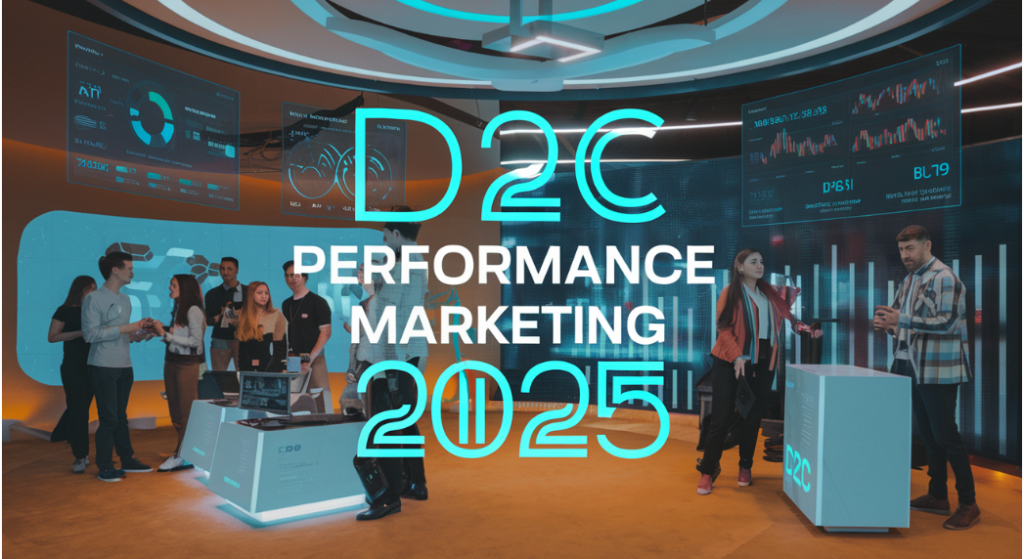
Evolution of D2C performance marketing
Performance marketing for D2C brands has undergone significant transformation since its inception. By 2025, it has become a highly sophisticated and data-driven approach, leveraging advanced technologies and consumer insights.
- Key milestones in D2C performance marketing evolution:
- Shift from traditional to digital channels
- Rise of personalization and AI-driven targeting
- Integration of augmented reality (AR) and virtual reality (VR)
- Emphasis on first-party data and privacy compliance
- Shift from traditional to digital channels
The landscape has shifted towards a more holistic, omnichannel approach, where brands seamlessly integrate online and offline experiences to drive performance.
Key metrics for success
In 2025, D2C brands focus on a comprehensive set of metrics to measure performance marketing success. These metrics go beyond traditional KPIs to encompass customer lifetime value and brand health.
Metric Category | Key Metrics |
Acquisition | CAC, ROAS, Conversion Rate0 |
Engagement | Time on Site, Social Interactions, AR/VR Engagement |
Retention | CLV, Repeat Purchase Rate, Churn Rate0 |
Brand Health | Net Promoter Score, Brand Sentiment, Sustainability Index |
Successful D2C brands in 2025 prioritize a balanced approach, focusing not just on short-term gains but also on building long-term customer relationships and brand value. This shift reflects the maturation of the D2C sector and the increasing importance of sustainable growth strategies.
Data-Driven Strategies for D2C Brands

Leveraging AI for predictive analytics
In the rapidly evolving D2C landscape of 2025, AI-powered predictive analytics has become a game-changer. By analyzing vast amounts of customer data, AI algorithms can forecast future trends, buying behaviors, and potential churn rates with unprecedented accuracy. This enables D2C brands to make proactive decisions and tailor their marketing strategies accordingly.
Key benefits of AI in predictive analytics:
- Improved customer segmentation
- Accurate demand forecasting
- Early identification of at-risk customers
- Optimization of pricing strategies
Personalization at scale
Personalization has moved beyond simple name insertions to deeply tailored experiences. D2C brands are now leveraging AI and machine learning to deliver hyper-personalized content, product recommendations, and offers at scale.
Personalization Element | Impact on D2C Brands |
Dynamic content | 30% increase in engagement |
Tailored product recommendations | 25% boost in conversion rates |
Personalized email campaigns | 20% improvement in open rates |
Customized landing pages | 15% increase in time on site |
Cross-channel attribution models
Understanding the customer journey across multiple touchpoints is crucial for D2C brands. Advanced cross-channel attribution models provide insights into the effectiveness of each marketing channel and their interplay.
- Data-driven attribution
- Time decay models
- Markov chain models
- Machine learning-based attribution
Privacy-compliant data collection methods
With stringent privacy regulations in place, D2C brands must adopt ethical and compliant data collection methods. This includes:
- Implementing transparent opt-in processes
- Utilizing first-party data effectively
- Adopting privacy-preserving technologies like federated learning
- Ensuring data minimization and purpose limitation
By embracing these data-driven strategies, D2C brands can gain a competitive edge in the complex digital landscape of 2025. Next, we’ll explore how to optimize customer acquisition channels to maximize the impact of these data-driven insights.
Optimizing Customer Acquisition Channels
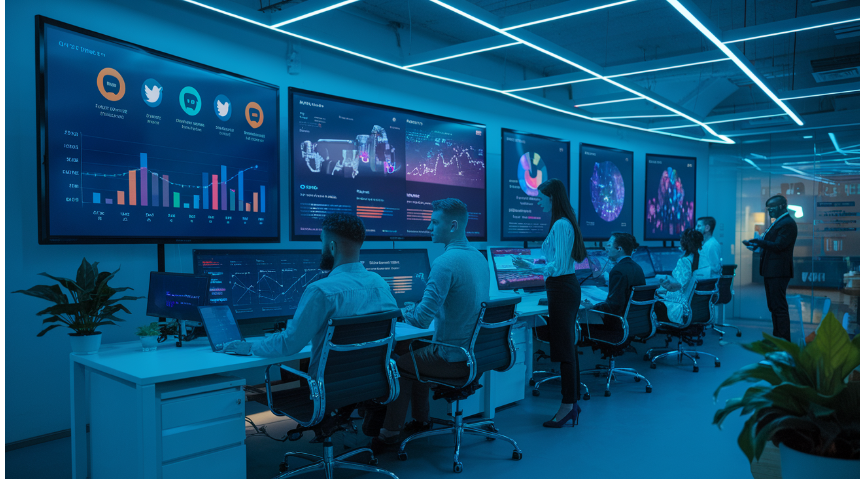
Social media advertising innovations
In 2025, social media advertising will evolve significantly, offering D2C brands innovative ways to acquire customers. Platforms will leverage AI-driven micro-targeting, allowing brands to reach hyper-specific audiences based on behavior patterns and predictive analytics. Interactive ad formats, such as shoppable posts and augmented reality (AR) try-ons, will become mainstream, enhancing user engagement and reducing the path to purchase.
- Key innovations:
- AI-powered audience targeting
- Shoppable posts
- AR try-on experiences
- Real-time personalization
- Social commerce integration
Search engine marketing tactics
Search engine marketing (SEM) will continue to be a crucial channel for D2C brands. In 2025, voice search optimization and visual search capabilities will play a significant role in SEM strategies. Brands will need to adapt their keyword strategies to include long-tail, conversational phrases and optimize product images for visual search algorithms.
SEM Tactic | Description | Impact |
Voice search optimization | Targeting conversational queries | Improved local search visibility |
Visual search optimization | Enhancing product image metadata | Increased product discoverability |
AI-driven ad copy | Dynamically generated ad text | Higher click-through rates |
Intent-based bidding | Adjusting bids based on user intent | Improved ROI on ad spend |
Voice and visual search optimization
As voice assistants and visual search technologies become more sophisticated, D2C brands must optimize their content accordingly. This includes creating FAQ-style content to match voice queries and ensuring product images are properly tagged and indexed for visual search engines.
Influencer marketing 2.0
Influencer marketing will evolve into a more authentic and data-driven practice. Micro and nano-influencers will gain prominence due to their higher engagement rates and niche audiences. AI-powered influencer matching platforms will help brands identify the most suitable partners based on audience demographics, engagement metrics, and brand values alignment.
Google Ads
Google Ads will remain a cornerstone of D2C customer acquisition strategies. In 2025, expect to see more advanced automation features, such as AI-driven bid strategies and dynamic ad creation. Smart campaigns will leverage machine learning to optimize ad placement across Google’s entire ecosystem, including Search, Display, YouTube, and partner networks.
Retention and Loyalty in the D2C Space

Subscription model enhancements
In 2025, D2C brands are revolutionizing subscription models to boost customer retention. Here are key enhancements:
- Personalized subscriptions
- Flexible pause and skip options
- Tiered loyalty programs
- Bundled offerings
Personalized subscriptions | AI-driven product recommendations | Increased relevance and satisfaction |
Flexible options | Easily pause or skip deliveries | Improved customer control |
Tiered loyalty | Exclusive perks for long-term subscribers | Enhanced customer value |
Bundled offerings | Combine complementary products | Higher perceived valu |
Gamification strategies
D2C brands are leveraging gamification to create engaging experiences that drive loyalty:
- Points systems with redeemable rewards
- Challenges and missions tied to product usage
- Virtual badges for achievements
- Leaderboards to foster friendly competition
These strategies not only increase engagement but also provide valuable data on customer preferences and behaviors.
Community-building techniques
Building a strong community around your brand is crucial for long-term success. Effective techniques include:
- User-generated content campaigns
- Exclusive member-only events (virtual and in-person)
- Brand ambassador programs
- Interactive social media challenges
By fostering a sense of belonging, D2C brands can create emotional connections that transcend traditional customer-brand relationships. This community-centric approach not only enhances retention but also turns customers into passionate advocates for the brand.
Measuring and Improving ROI

Advanced analytics tools
In 2025, D2C brands will rely heavily on sophisticated analytics tools to measure and improve their ROI. These tools will offer deep insights into customer behavior, marketing performance, and overall business health.
Key features of advanced analytics tools:
- AI-powered predictive analytics
- Real-time data processing
- Multi-channel attribution modeling
- Sentiment analysis
- Natural language processing
Tool Category | Primary Function | Benefits |
Predictive Analytics | Forecast future trends | Informed decision-making |
Multi-channel Attribution | Track customer touchpoints | Optimize marketing spend |
Sentiment Analysis | Gauge customer opinions | Improve brand perception |
Real-time performance tracking
Real-time tracking will be crucial for D2C brands to stay agile and responsive in a fast-paced market. This enables immediate adjustments to campaigns and strategies based on live data.
A/B testing in the age of AI
AI-driven A/B testing will revolutionize how D2C brands optimize their marketing efforts. These advanced systems will automatically generate and test multiple variations, learning and adapting in real-time to maximize conversions and ROI.
Customer lifetime value optimization
Focusing on customer lifetime value (CLV) will be paramount for D2C brands in 2025. By leveraging advanced analytics and AI, brands can:
- Predict future purchasing behavior
- Identify high-value customers
- Personalize retention strategies
- Optimize acquisition costs based on projected CLV
With these tools and strategies in place, D2C brands will be well-equipped to measure and continuously improve their ROI in the dynamic landscape of 2025. Next, we’ll explore the emerging platforms and technologies that will shape the future of performance marketing.
Emerging Platforms and Technologies
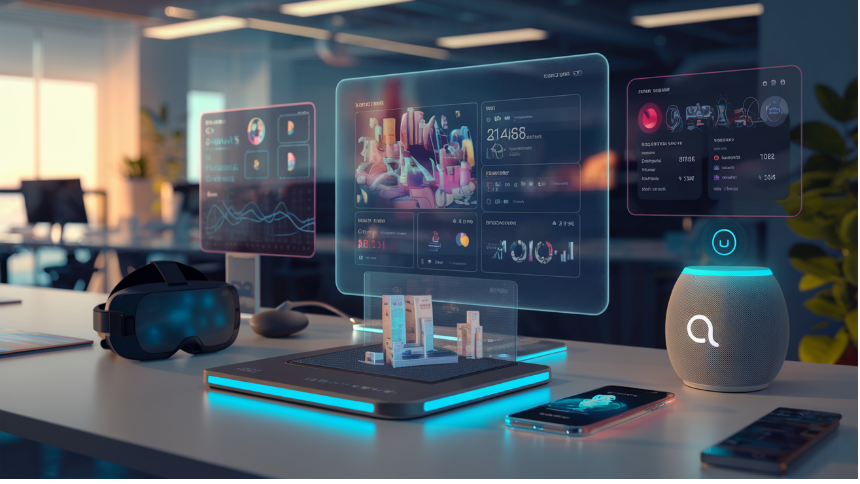
Metaverse marketing opportunities
As D2C brands explore new frontiers in performance marketing, the metaverse presents exciting opportunities for immersive customer experiences. In 2025, we expect to see a surge in metaverse-based marketing initiatives, offering brands unique ways to engage with their audience.
- Virtual showrooms and product demonstrations
- Interactive brand experiences and games
- Exclusive virtual events and product launches
- Digital collectibles and NFTs for brand loyalty
The metaverse allows D2C brands to create memorable, personalized experiences that drive customer engagement and loyalty. By leveraging this technology, brands can stand out in a crowded digital landscape and forge deeper connections with their target audience.
Blockchain for transparent advertising
Blockchain technology is set to revolutionize the advertising industry by providing unprecedented transparency and trust. For D2C brands, this means more efficient and effective marketing campaigns.
Blockchain Benefits | Impact on D2C Brands |
Ad fraud prevention | Improved ROI |
Transparent pricing | Cost-effective campaigns |
Verified impressions | Accurate performance metrics |
Smart contracts | Automated, fair payments |
By adopting blockchain-based advertising solutions, D2C brands can ensure their marketing budgets are spent more efficiently, with verifiable results and reduced risk of fraud. This technology also enables brands to build trust with consumers by providing transparent information about product origins and supply chains.
As we look towards the future of performance marketing, these emerging platforms and technologies offer D2C brands powerful tools to enhance their marketing strategies and drive growth in an increasingly competitive landscape.
Compliance and Ethics in Performance Marketing

Ethical AI usage in marketing
In 2025, AI will be an integral part of performance marketing for D2C brands. However, it’s crucial to use AI ethically to maintain consumer trust and brand integrity. Here are key considerations:
- Transparency: Clearly disclose AI usage in marketing campaigns
- Bias mitigation: Regularly audit AI algorithms for fairness
- Data privacy: Ensure AI systems comply with data protection regulations
AI Usage | Ethical Considerations |
Personalization | Avoid invasive data collection |
Chatbots | Disclose bot identity upfront |
Predictive analytics | Use diverse datasets to prevent bias |
Sustainability in digital advertising
Sustainability is no longer optional in 2025. D2C brands must prioritize eco-friendly digital marketing practices:
- Green hosting: Choose data centers powered by renewable energy
- Efficient code: Optimize websites and ads for lower energy consumption
- Carbon-neutral campaigns: Offset digital advertising emissions
Building consumer trust through transparency
Transparency is key to building and maintaining consumer trust in the era of performance marketing:
- Clear data usage policies: Explain how customer data is collected and used
- Ad labeling: Clearly identify sponsored content and native advertising
- Performance metrics: Share relevant campaign data with customers
By prioritizing ethical AI usage, sustainability, and transparency, D2C brands can build strong, lasting relationships with their customers while staying compliant with regulations. As we move forward, these principles will be crucial in navigating the complex landscape of performance marketing in 2025 and beyond.
The Final Word

Embracing the Future of Performance Marketing
As we look ahead to 2025, D2C brands must adapt to the ever-evolving landscape of performance marketing. The key to success lies in embracing data-driven strategies, optimizing acquisition channels, and fostering customer loyalty. Here’s a quick recap of the essential elements:
Aspect | Key Takeaway |
Data-Driven Strategies | Leverage AI and machine learning for personalized campaigns |
Customer Acquisition | Focus on omnichannel presence and emerging platforms |
Retention and Loyalty | Implement robust CRM systems and loyalty programs |
ROI Measurement | Utilize advanced attribution models and predictive analytics |
To stay competitive in the D2C space, brands should:
- Continuously adapt to new technologies and platforms
- Prioritize customer privacy and ethical marketing practices
- Invest in upskilling marketing teams to handle emerging tools
- Foster a culture of experimentation and agile marketing
By embracing these principles, D2C brands can position themselves for success in the dynamic world of performance marketing. As the industry continues to evolve, those who remain flexible, innovative, and customer-centric will thrive in the years to come.

Performance marketing will be crucial for D2C brands in 2025, with data-driven strategies and optimized customer acquisition channels at the forefront. As the digital landscape evolves, brands must focus on retention and loyalty while continuously measuring and improving their ROI. Emerging platforms and technologies will offer new opportunities, but brands must navigate these advancements while adhering to compliance and ethical standards.
To thrive in the competitive D2C space, brands should embrace a holistic approach to performance marketing. By leveraging data insights, optimizing channels, and prioritizing customer relationships, D2C brands can create sustainable growth and success. Stay adaptable, keep ethics at the forefront, and always be ready to embrace new technologies to stay ahead in the ever-changing world of performance marketing.
Need help with Meta Ads for your D2C brand? Viral Groww specializes in crafting impactful ad campaigns designed to maximize ROI and accelerate growth. Let us help your brand thrive in the digital landscape. Contact us today!
Performance marketing focuses on measurable results, such as clicks, leads, and sales. In 2025, D2C brands rely on this approach to optimize ROI, improve customer acquisition, and adapt to rapidly changing digital trends using data-driven strategies.
Advanced analytics tools with AI-powered predictive analytics, real-time tracking, and multi-channel attribution are essential. Brands should focus on CLV optimization and AI-driven A/B testing for continuous improvement.
Sustainability reflects a brand’s commitment to eco-friendly practices. This includes using green hosting, optimizing digital ads for energy efficiency, and ensuring ethical advertising practices to build trust and long-term customer loyalty.
To measure ROI, divide the revenue generated by your campaigns by the total spend and multiply by 100. Use metrics like Cost Per Acquisition (CPA), Return on Ad Spend (ROAS), and Attribution Models to track effectiveness.
The top channels include Meta Ads, Google Ads, TikTok Ads, YouTube, and email marketing. Emerging platforms like Connected TV (CTV) and affiliate marketing networks are also gaining traction for driving measurable results.

How We 2.5X’d Organic Traffic for SUYU India in Just 5 Months by Following Our White Hat SEO Framework
SUYU India was born with a clear vision—to bring superfood-powered skincare into the Indian market. Co-founded with a deep belief in sustainability.
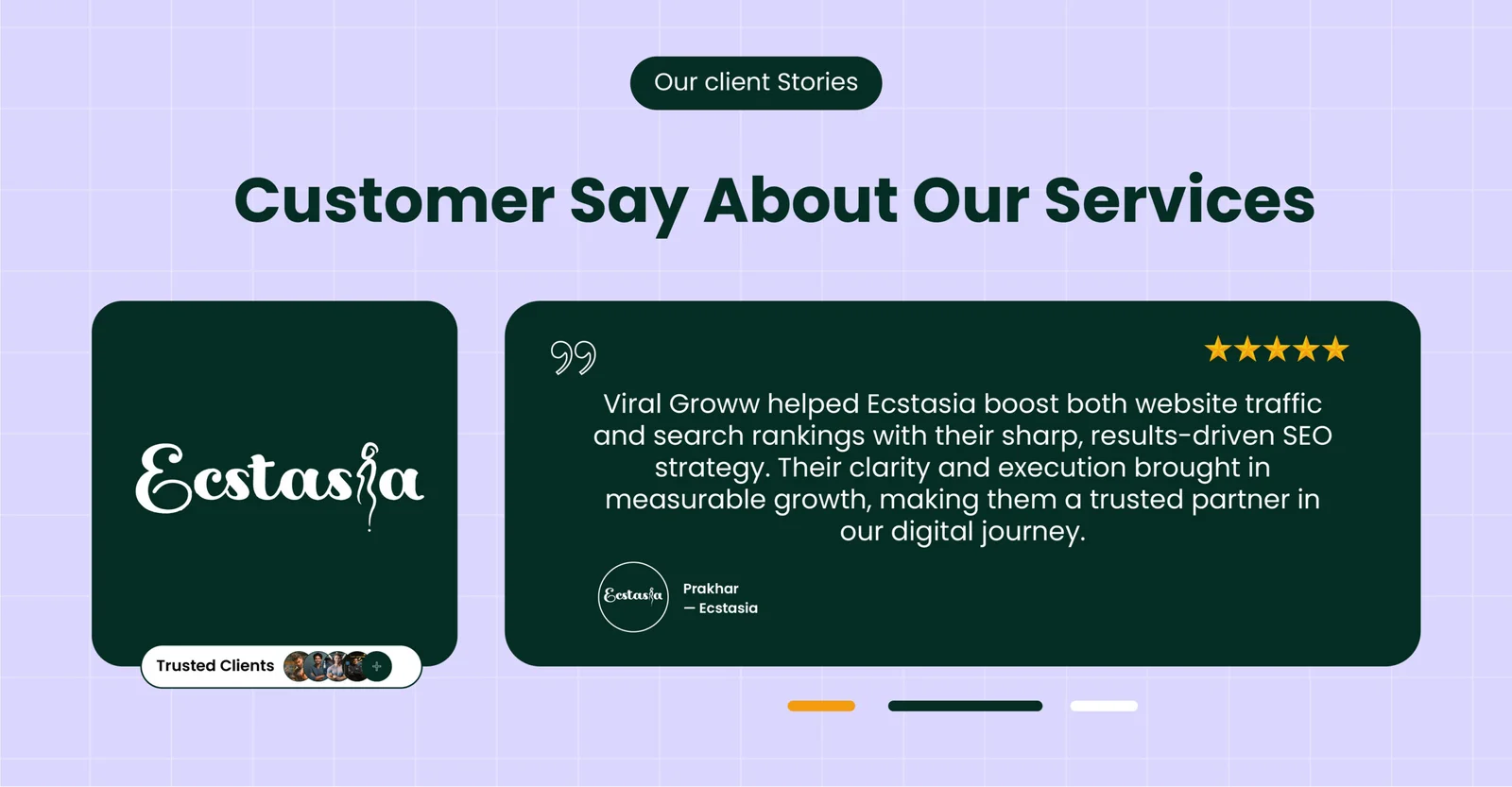
Scaling a Sexual Wellness Brand with SEO – How We Did It for Ecstasia
Ecstasia is a sexual wellness D2C brand started by Prakhar Raj and Hamid Iqbal in December 2024. Prakhar, a school friend of mine, works in a corporate job but has always wanted to start his own business.

How we got 8.7X Impressions for a gifting D2C brand within 3 Months by doing White Hat SEO
Foundation Gift was started by Rakesh Adak and Abhishek Koley with a simple idea — gifts should feel just as special as the moments they celebrate.

Scaling a Lingerie Brand to 7-Figure Sales in Just 75 Days—Proof Inside!
Krvvy is a modern, forward-thinking lingerie brand committed to redefining comfort and functionality. Designed to elevate the lingerie experience, Krvvy celebrates the beauty of all women, embracing and admiring every curve.

How Sumit Dubey Fitness Classes Transformed into a Fitness Empire with Strategic Digital Marketing
Sumit Dubey Fitness Classes, founded by Sumit Dubey, provides online fitness training with a personalized touch.

Raj Yoga School’s Journey to the Top of Search Rankings
Nestled between the tranquil peaks of the Himalayas and the sun-kissed beaches of Goa, Raj Yoga School has been a sanctuary for aspiring yoga teachers in India.

Scaling Dharishah Ayurveda from ₹20 Lakhs to ₹50 Lakhs in Monthly Sales
Dharishah Ayurveda, a promising Ayurvedic brand, had already seen growth through performance marketing, scaling from ₹2 lakhs to ₹20 lakhs in monthly sales (covered in a previous case study).

Building Trust and Revenue for Dharishah Ayurveda with Scalable Facebook Ads
Dharishah Ayurveda, led by CEO Naman Dhamija, is a premium Ayurvedic brand dedicated to promoting natural wellness.

How Goyal Packers & Movers Skyrocketed to #1 in 40+ Cities with White Hat SEO
Goyal Packers and Movers India, owned by Mr. Sampat Singh, is one of the most preferred packers and movers across Northern India, offering exceptional shifting services.


